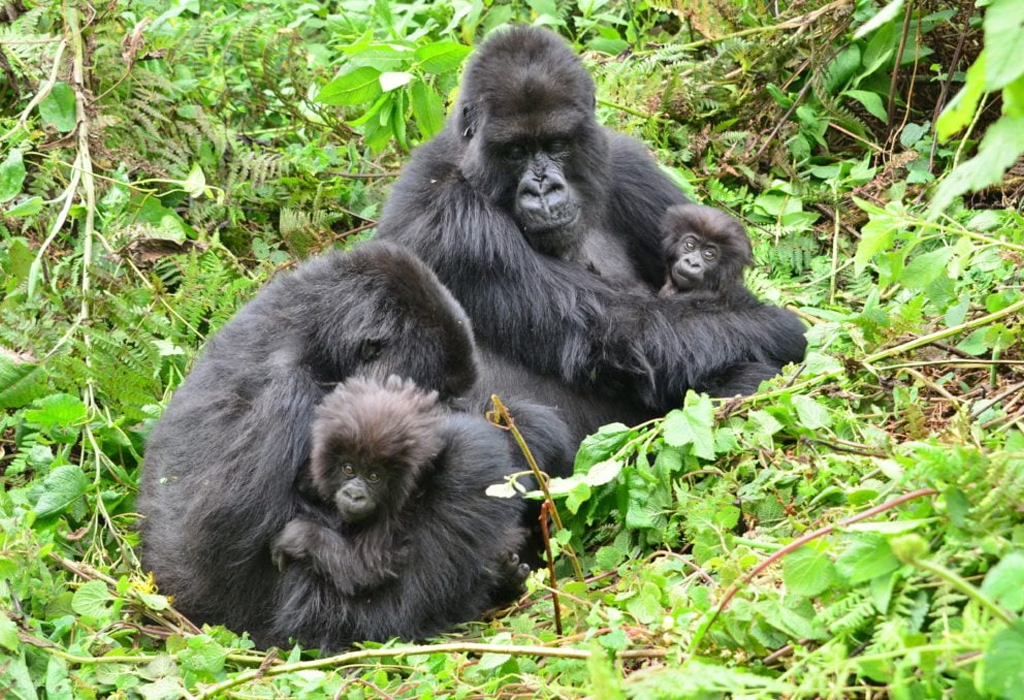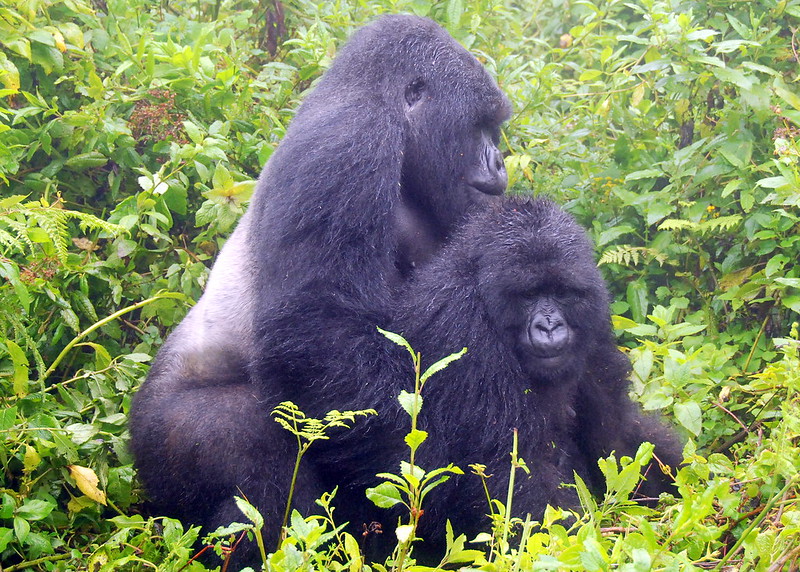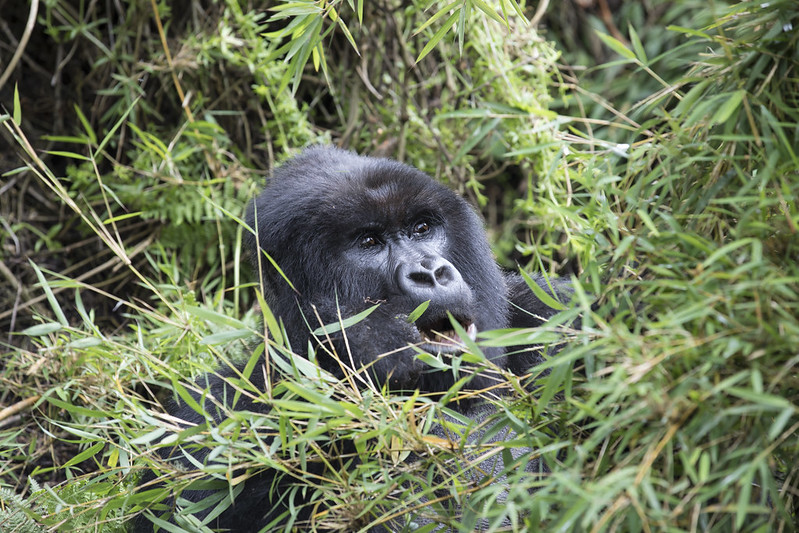
How Do Mother Gorillas Carry Out Their Responsibilities?
How Do Mother Gorillas Carry Out Their Responsibilities?
In the dense misty forests of central and eastern Africa, life unfolds in a rhythm so gentle and yet so powerful that it humbles even the most seasoned explorers. At the heart of this enchanted wilderness lives one of the most captivating creatures on Earth: the mountain gorilla. Among them, the role of a mother gorilla stands out as a beautiful example of instinct, care, sacrifice, and profound love. Watching a mother gorilla nurture her young is a deeply moving experience one that mirrors human motherhood in so many remarkable ways. It is in the quiet strength of these mothers that the future of gorilla families thrives.
The Foundation of Gorilla Families
Gorilla societies are built on strong family bonds. These primates live in tight-knit groups called troops, led by a dominant silverback male who protects and guides the family. But within this structure, the real soul of the troop is the mother. She is the one who gives life, ensures survival, and passes on knowledge from one generation to the next.
Mother gorillas shoulder immense responsibilities from the very moment they give birth. A single infant becomes their entire world. They devote every hour of the day to keeping it safe, nourished, and comforted. The bond between a mother gorilla and her baby is one of the most intimate and enduring in the animal kingdom.
A Gentle Start: Birth and Early Care
Mother gorillas usually give birth every four to six years, depending on the survival of the previous offspring. The birth itself happens quietly and naturally in the comfort of the forest. Gorilla infants are incredibly vulnerable at birth, weighing only about four pounds (1.8 kilograms). Their eyes remain closed for several days, and they are entirely dependent on their mothers.
 From the moment the baby is born, the mother cradles it against her chest. She supports its head, protects it from harm, and keeps it warm against the chill of the forest. Unlike human mothers who may share childcare duties, a gorilla mother takes on nearly all aspects of raising her young. She carries the baby on her belly for the first few months, rarely letting it go, not even while foraging for food.
From the moment the baby is born, the mother cradles it against her chest. She supports its head, protects it from harm, and keeps it warm against the chill of the forest. Unlike human mothers who may share childcare duties, a gorilla mother takes on nearly all aspects of raising her young. She carries the baby on her belly for the first few months, rarely letting it go, not even while foraging for food.
Carrying and Protection
Around the age of three to four months, the infant begins to hold onto its mother’s fur. At this stage, she carries it on her back, a familiar sight in the wild. This form of carrying allows the mother to move more freely while ensuring her baby stays close. Whether navigating steep slopes or wading through undergrowth, the mother moves with care, never jolting or dropping her young.
Mother gorillas are incredibly protective. They position themselves between their infant and any potential threat, whether it is another animal or a member of the troop. In moments of danger, their maternal instincts take over in full force. They fight to defend their young, even from older siblings or other troop members.
Feeding and Nurturing
Gorilla mothers nurse their babies exclusively for about four to six months. Breastfeeding can continue for up to three years, depending on the mother and the child. Nursing is not only a source of nutrition; it is also a time of bonding. During these moments, the baby feels safe and loved, comforted by the sound of the mother’s heartbeat and her gentle touch.
As the infant grows, the mother introduces it to solid foods—leaves, shoots, and fruit. She models how to forage, what to eat, and how to use hands and teeth properly. Learning by observation plays a huge role in a young gorilla’s development. The mother leads by example, shaping not just the infant’s diet but also its behavior.
Teaching Life Skills
A gorilla mother teaches her child how to live in the forest. She guides it in climbing trees, building nests, communicating through body language and vocalizations, and interacting with other troop members. These lessons are vital for the child’s survival and future integration into the social structure.
Unlike in some animal species where young are left to fend for themselves early on, gorilla mothers remain deeply involved in their child’s upbringing for years. Even when the infant becomes a juvenile, the mother remains a central figure—always nearby, always present, always ready to step in when needed.
Emotional Support and Social Development
Mother gorillas are emotionally attentive. They recognize when their young are anxious, upset, or tired. They comfort them through physical contact stroking, hugging, and grooming. These gestures reinforce emotional security and trust.
Social learning also begins with the mother. She sets the tone for how her offspring will interact with others. From watching her, the young gorilla learns when to play, when to retreat, and how to handle conflict. These social skills are essential for survival in the complex dynamics of gorilla society.
Weaning and Independence
Weaning is a slow and gentle process. Around the age of three or four years, the infant becomes more independent. It spends more time exploring, playing with peers, and climbing trees alone. Still, the mother remains watchful. Even as independence grows, the maternal bond does not break.
Eventually, when the young gorilla becomes a teenager, it begins to spend more time away from its mother, especially males who may later leave the troop to form their own. Despite the physical separation, the emotional connection often remains. Many adult gorillas still maintain strong bonds with their mothers and show them affection during reunions.
The Deeper Meaning of Motherhood in Gorilla Societies
What makes mother gorillas especially inspiring is their silent strength. They do not seek attention or recognition. They simply do what is necessary—every day, with consistency and dedication. Their maternal love is fierce, tender, and unwavering.
In many ways, gorilla mothers mirror the journey of human mothers. They carry the burden of care with grace. They teach not just survival, but the values of empathy, resilience, and connection. Their actions shape the future of their family and, ultimately, the survival of the species.
Conservation and the Importance of Maternal Bonds
Understanding and appreciating the role of mother gorillas reminds us why conservation efforts are so critical. Habitat destruction, poaching, and disease have threatened gorilla populations for decades. Yet, through dedicated protection and eco-tourism, their numbers are slowly recovering.
When we protect mother gorillas, we protect entire generations. Every infant raised under the care of a mother has the chance to grow, thrive, and carry the legacy forward. Their nurturing hearts are the heartbeat of the forest one that deserves our admiration and protection.


